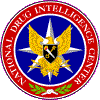
Hawaii High Intensity Drug Trafficking Area Drug Market Analysis
June 2007
Transportation
Mexican DTOs smuggle most illicit drugs available in Hawaii into the state through California; these drugs originate from source areas in Mexico (ice methamphetamine and black tar heroin), South America (cocaine), and California (ice methamphetamine). Asian DTOs transport lesser but considerable and increasing quantities of illicit drugs, particularly high-potency marijuana from Canada, northern California, and Washington; ice methamphetamine and heroin from Asia; and opium from Laos and Cambodia. Illicit drugs typically are transported to and through entry points on the island of O'ahu (particularly the Honolulu International Airport), primarily through mail services or couriers aboard commercial flights. These methods do not allow for the transportation of large amounts of illicit drugs at any one time; however, the frequency with which Hawaii-based DTOs and criminal groups travel to and from the U.S. mainland helps to maintain adequate supplies for distribution networks.
Most of the drugs transported to O'ahu are consumed there; however, a portion is transported on interisland flights to neighboring islands for subsequent distribution. Furthermore, Hawaii's statewide system of airports consists of 11 airports that serve commercial airlines and general aviation as well as 4 airports that serve general aviation only. International airports and airfields on six of the eight islands allow for direct flight service to and from major U.S. mainland, Asian, and Canadian cities, a situation that quite likely facilitates the transportation of illicit drugs from these locations not only into Honolulu but also directly into Hawaii, Maui, and Kaua'i Counties.
Local and Polynesian DTOs generally control the transportation of marijuana produced in Hawaii to markets within and outside the state. Marijuana produced in Hawaii is typically transported in multipound and multiounce quantities from production sites to drug markets throughout the state (where most is consumed) by private vehicle and couriers aboard interisland commercial flights and to drug markets outside the state by mail, package delivery services, and couriers aboard commercial flights.
The maritime conveyance of illicit drugs in transit to and from the U.S. mainland is perhaps the most significant intelligence gap with regard to the drug situation in Hawaii and a growing concern among federal, state, and local law enforcement in Hawaii. The state's system of commercial harbors consists of 10 harbors on six islands, through which an estimated 99 percent of commercial goods imported to Hawaii enter the state. Law enforcement has received anecdotal information indicating that illicit drugs are being shipped to the islands in containerized cargo bound for Hawaii; however, relatively few seizures have been made, thereby impeding a full assessment of the threat. As a result, a Cargo-Container Interdiction Program designed to address the maritime smuggling issue has been proposed to the Hawaii HIDTA by several law enforcement agencies operating in the state; it is expected to become a HIDTA initiative in 2007. (See text box.)
|
Cargo-Container Interdiction Program Since the summer of 2006, representatives from DEA, U.S. Coast Guard, U.S. Immigration and Customs Enforcement (ICE), Transportation Security Administration, Hawaii Airport Task Force, Hawaii County Police Department, Honolulu Police Department Narcotics/Vice Canine Group, Kaua'i Police Department, and Maui Police Department have met periodically to discuss the development of a cargo-container initiative to counter container-based drug smuggling. These representatives have also met with the heads of local shipping companies and other businesses involved in shipping cargo and goods from the West Coast to Hawaii and also between the Hawaiian islands. They have developed excellent working relationships within the transshipping industry that will enable law enforcement to target drug dealers who use cargo containers to transport their loads of illegal drugs. |